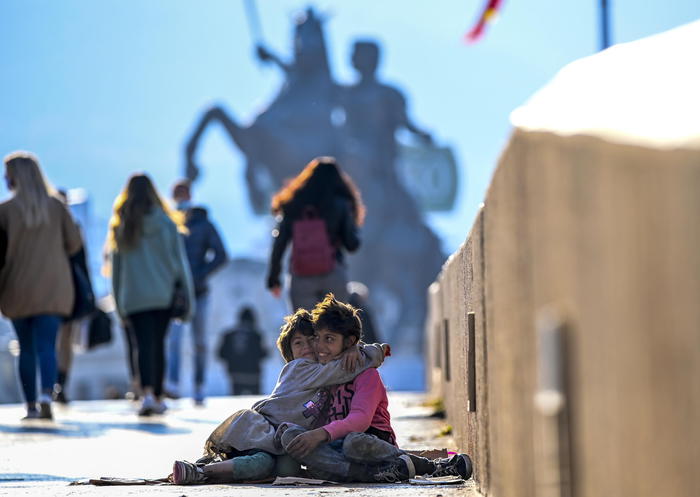The at-risk-of-poverty rate, i.e. the percentage of people with an income below 60% of the average available income, in Italy rose from 20% in 2020 to 20.1% in 2021, for 11.84 million people involved.
It can be read in the latest Eurostat tables, according to which the percentage rises to 25.2% (14.83 million) if we also consider people at risk of social exclusion, i.e. those who are at risk of poverty or cannot afford a series of material goods or social activities or live in low-intensity households.
Over a quarter of Italian children under the age of six live in families at risk of poverty
, or with incomes below 60% of the average available.
This is what emerges from the Eurostat tables, according to which the rate in 2021 is 26.7%, up from 23.8% in 2020 and the worst since 1995. This is 667 thousand children, a slight increase from 660 thousand in 2020. The figure is also affected by the fact that the population in this age group has shrunk.
If the audience is also extended to families at risk of social exclusion, the percentage for those under 6 in difficult situations rises to 31.6% from 27% in 2020.
In detail, the Eurostat tables show that the poverty rate in Italy before social transfers (excluding pensions) is at 28.5%, up from 25.3% in 2020. This is a sign of the importance of transfers in the reduction of the share of people in difficulty.
If in Italy the share of the poor is reduced by 8.4 points thanks to transfers, in Germany it is reduced by more than 10 points (to 15.8%) and in Spain by 9.5 (to 21.7%).
The percentage of minors in Italy at risk of poverty in 2021 rises to 26% (from 25.1% in 2020), while that of the elderly drops to 15.6% (from 16.8%) thanks to the retention of pensions that are not yet threatened by the inflation that exploded in 2022.
In Germany, the at-risk-of-poverty rate for the elderly over 65 is 19.4%, higher than both the overall figure (15.8%) and that of children under the age of 6 (16.8%).
The at-risk-of-poverty rate is higher for women (20.7%), although it is down in 2020 compared to that of men (19.4%), up in 2020.
If we also look at social exclusion, the overall rate has risen to 25.2%, with a percentage of 25.8% for females (down from 26.2% in 2020) while for men there has been an increase since 23.6% to 24.4%.
If for people under 65 the risk of poverty and social exclusion rises from 26.6% to 27.3%, for the elderly over 65 it decreases from 19.4% in 2020 to 18.1% in 2021 The risk of poverty and social exclusion rate rises from 28.9% to 29.7% for those under 18 and from 28.6% to 30.7% for people between 20 and 29 years of age.
Italy is not a country for young people but above all not for children
, with a growth of more than four percentage points for children under 6 for whom the risk of poverty and exclusion rate goes from 27% to 31.6 %.
In practice, in 2021 789 thousand preschool children and, overall, 2.85 million minors were in families with an income below 60% of the average or in households with severe material and social deprivation (measured by their ability to afford a range of material possessions or social activities) or in a family with very low work intensity.

